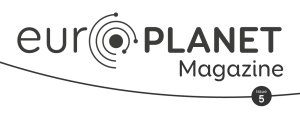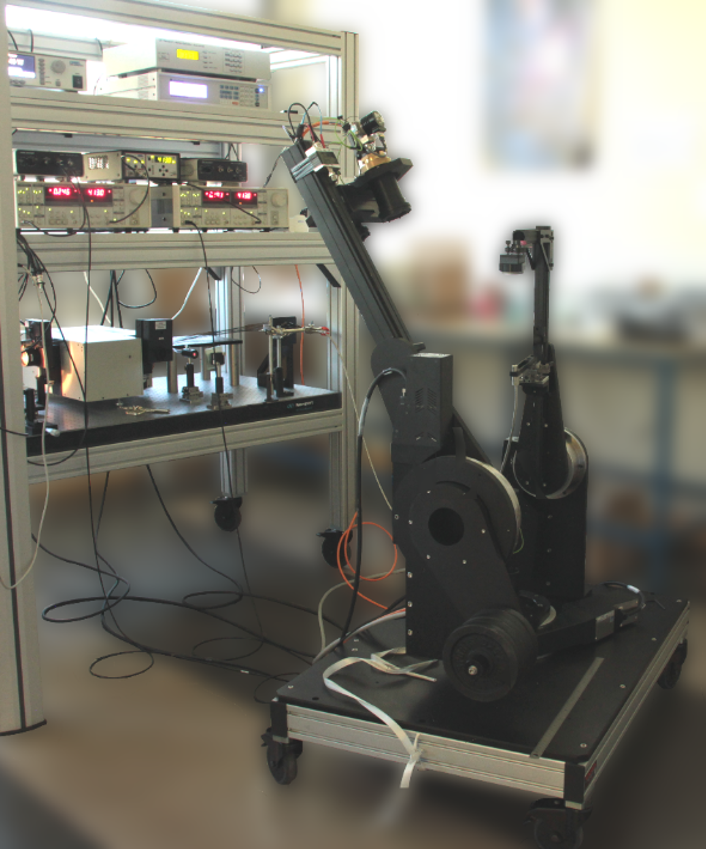Developing Labs for Research that is Out of this World
Gareth Davies (Vrije Universiteit Amsterdam, Netherlands) describes how investment from the European Commission has supported Europlanet’s development of state-of-the-art facilities for planetary science – and other fields of research, such as cultural heritage.
Read article in the fully formatted PDF of the Europlanet Magazine.
Over the coming decade, European Space Agency (ESA) missions should yield ambitious rewards for the planetary science community. BepiColombo will finally reach Mercury, and JUICE will extend our knowledge of potential habitable worlds as it explores Jupiter’s icy moons. The James Webb Space Telescope, CHEOPS, PLATO and ARIEL will take our understanding of exoplanets to a new level and start to show how our Solar System fits into the wider population of planets. NASA’s Perseverance rover is collecting and caching samples that will be returned to Earth from Mars, and the international Artemis programme will kickstart a new era of exploration of the Moon.
Space missions are – by design – game-changers that provide data to enhance our understanding of planetary bodies and systems. However, these missions need to be part of a wider ecosystem of infrastructure to support the research community. In particular, the interpretation of data and the development of instrumentation for future missions both require access to a comprehensive suite of Earth-based simulation and analysis facilities. It is here that Europlanet has an important role to play.
The European Commission (EC) aims to maximise the scientific output of research infrastructure across Europe through programmes whereby researchers from one country can visit and use facilities from another. Since 2009, Europlanet has implemented a series of EC-funded programmes for coordinated Transnational Access (TA) to planetary-related facilities. The current Europlanet 2024 Research Infrastructure (RI) project now supports access to over 40 simulation and analysis laboratories and analogue field sites in Europe and around the world.
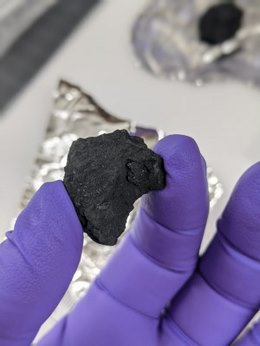
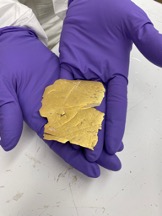
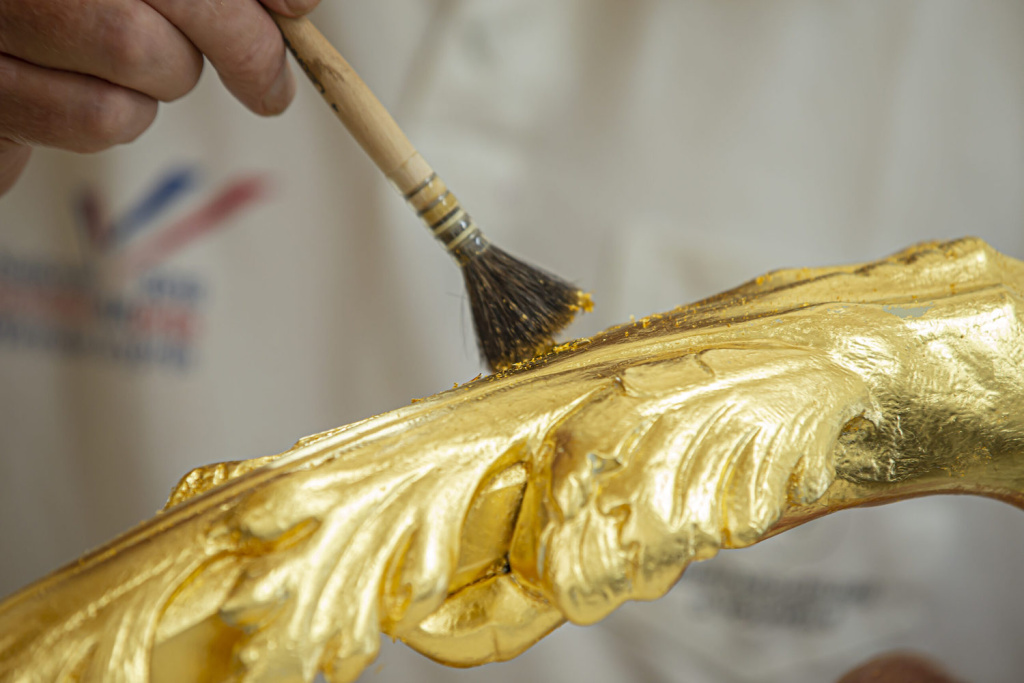
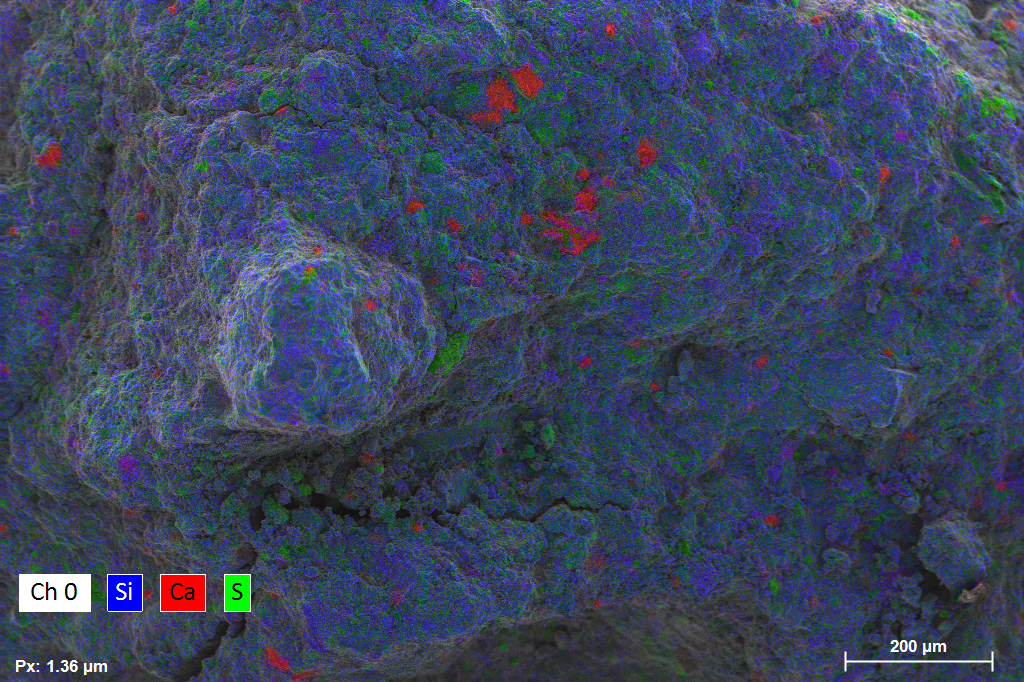
Europlanet has also made strategic investments to improve the capabilities of facilities offered through the TA programme, with the goal of allowing researchers to fully exploit observations made in past, current and planned missions. Developments funded through Joint Research Activities (JRA) within successive EC-funded projects have been designed to better-simulate and understand diverse and extreme planetary environments. The upgrades have been focused on three main themes:
I. Generating spectroscopic data under realistic planetary conditions.
II. Physical and chemical characterisation of dust and ice-rich planetary environments.
III. Optimising the handling, characterisation and analysis of rare samples, particularly in the context of sample return missions.
All six major JRA projects funded by Europlanet have involved collaboration with industrial partners, either in the design and manufacture of equipment or directly as partners in optimising analytical instrumentation. Altogether, fifteen different research teams and two industrial partners from seven countries have contributed to the upgrades, with a total investment of over 1.5 million Euros.
In July 2023, all currently planned JRA projects are complete, with most of the enhanced facilities already in use by the community through the Europlanet TA programme.
Here we summarise the upgrade projects within the three themes.
Theme I: Tricks of the Light
Spectroscopic measurements of the surfaces of planetary bodies can reveal a wealth of information about the current and past conditions in the Solar System. However, the way in which radiation is absorbed and reflected is affected not only by the composition of rocks and their constituent minerals but also their shape, size and ambient conditions. Differences in mineralogy, grain type and compactness can all impact the way that light interacts with the target material. Understanding how the physical environment influences spectra is, therefore, vital at both the planning stage and in the detailed investigation phase of a mission.
Europlanet has made JRA investments to develop two facilities that generate spectral measurements at low pressures and extreme temperatures. The upgrades will, ultimately, contribute to establishing the database required to allow unambiguous identification of the mineralogy and physical nature of the surfaces of many planetary bodies.
Project 1: From SHINE to SHADOWS
Upgrades to the Centre National de la Recherche Scientifique (CNRS) Grenoble’s Cold Surfaces Spectroscopy facility
Team: Bernard Schmitt, Pierre Beck, Sandra Potin, Olivier Brissaud.
International Collaborators: DLR
Interpretation of spectral observations of asteroids or comets present multiple challenges. The surfaces of many Solar System objects are extremely dark – primitive asteroids or comet nuclei may reflect less than 1% of the incoming visible light. Analysis of samples from space, such as rare meteorites, asteroid grains or interplanetary dust particles, may need to be carried out with only a few cubic millimetres of material. Laboratory investigations of the properties of analogue materials must also be carried out at very low temperatures and pressures if they are to provide a realistic comparison.
Through CNRS and Europlanet JRA funding, a multi-national group has supported the development of the CNRS Grenoble’s Cold Surfaces Spectroscopy (CSS) facilities to provide comprehensive spectral data of rare and microscopic samples of minerals and ices. The facility houses two, custom-made spectro-gonio radiometers – instruments that analyse the light-scattering properties of planetary surface across a wide range of illumination and observation angles. The instruments are located in a dark, cold room that can be cooled down to -20°C and may also be used with cryogenic environmental cells that can cool samples down to -213°C under controlled atmospheric or vacuum conditions.
The facility’s original instrument, SHINE (SpectropHotometer with variable INcidence and Emergence), dates back to the early 2000s. Europlanet and CNRS funding has enabled the development of SHADOWS (Spectrophotometer with cHanging Angles for the Detection Of Weak Signals), a next-generation spectro-gonio radiometer, completed in 2018.
SHADOWS has a radical new design that allows far greater sensitivity and the capability to measure the bidirectional spectral reflectance in the wavelength range of 0.4-4 micrometres (visible to near-infrared) of millimetre-sized dark samples at low temperatures. SHADOWS maintains the <1% absolute photometric accuracy (how accurately the instrument measures the absorbance of a sample) and wide geometrical range of SHINE, while decreasing the minimum sample size of the sample by three orders of magnitude and the minimum measurable reflectance by almost a factor of 100. Currently, SHADOWS is the only spectro-gonio radiometer worldwide able to measure samples with such small size and low albedo (down to below 0.1%).
Through Europlanet funding, two sample vacuum chambers (< 10-6 mbar) have been developed: the first allows measurements at small-to-moderate phase angles (between incoming and reflected light) of up to 60° under vacuum at cryogenic temperatures (down to -198°C). The second (phase angles <80°) can adjust the vacuum to one atmosphere from room temperature to 250°C with sample sizes up to 680 mm3. Recent studies with the instrument include spectral investigations under vacuum conditions of an extensive series of dark meteorites of various classes, with the aim of matching them to their parent asteroids.
SHADOWS has also supported the research of several early career researchers, with much of the development and calibration work carried out by Sandra Potin as her PhD project
Project 2: Hot and Cold
Upgrades to DLR’s Planetary Spectroscopy Laboratory (Germany)
Team: Jörn Helbert, Alessandro Maturilli (DLR).
International Collaborators: CNRS
The Planetary Spectroscopy Laboratory (PSL) at DLR has used Europlanet JRA funding to extend spectral measurements at very high and very low temperatures. In 2018, capabilities were extended for measurements at high temperature, offering the community access to spectra obtained in emission at typical temperatures for the surface of Venus (460°C) and covering the infrared spectral range from 0.7 to 1.2 micrometres (and beyond).
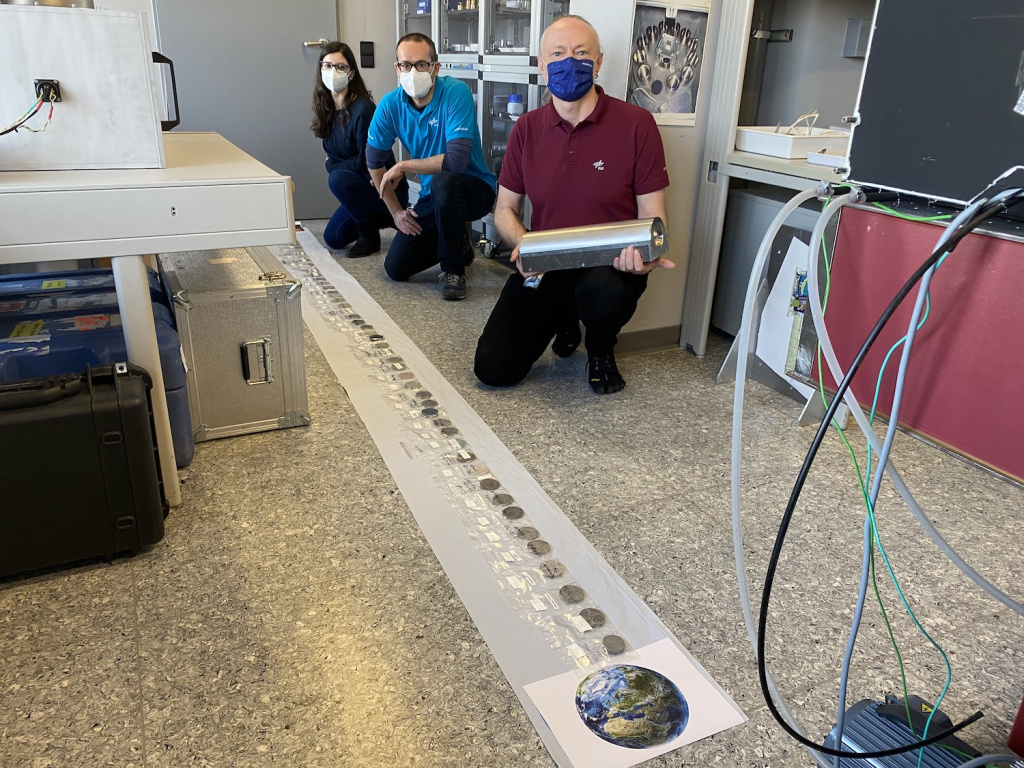
This key development, which is globally unique, enables comparison of laboratory spectra with mission data gathered in the spectral windows near 1 micrometre, where the venusian CO2-rich atmosphere is transparent and where important information on the redox state and transition metal contents on the surface can be acquired (see ‘Finding New Ways of Envisioning Venus’, Europlanet Magazine Issue 2).
More recently, the expertise used to develop the vacuum chambers at the CSS facilities in Grenoble has been drawn on to construct a new cryo-chamber at DLR. The DLR chamber, completed in 2023, will enable spectral and gas analysis of icy samples under low-pressure atmospheres comparable to outer Solar System bodies (3 x 10-6 mbar). The vacuum system is automated and the minimum operational temperature is -140°C. A pair of synthetic diamond windows have been installed in the spectrometer and the external source to increase the range of wavelengths that can be measured. The addition of a gas analyser also enables the monitoring of gases released by the sample during the whole process of cooling and measuring.
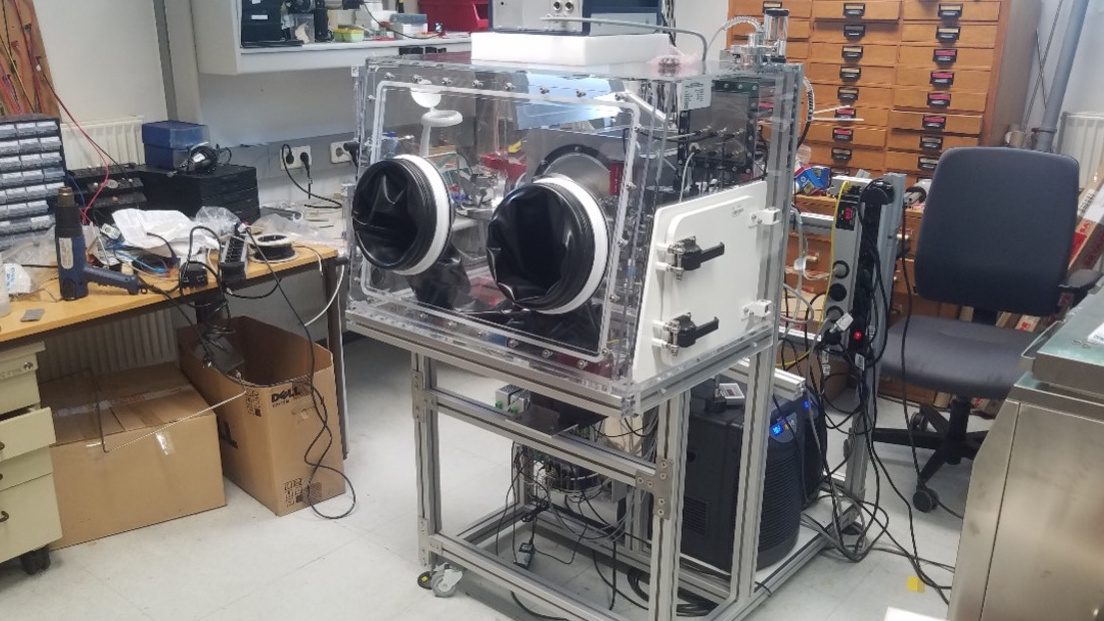
Theme II: Worlds of Ice and Dust
Missions like Cassini-Huygens and Juno have revealed the highly complex nature of the relationships between gas giants, their intense radiation environments and their icy moons (see feature on JUICE). To prepare for the arrival of JUICE and Europa Clipper, the scientific mission teams will need to understand how the high energy radiation emitted by Jupiter, as well as solar radiation, can change the chemical and physical conditions of ices on Europa, Ganymede and Callisto. Ongoing processing of ices, as well as the implantation of elements, can influence their physical properties, such as strength or melting conditions. As a result, laboratory-based studies of analogue ices are essential for accurately interpreting mission data and will, ultimately, help determine the habitability and astrobiological potential of icy moons.
If understanding ice is critical to studies of the outer Solar System, dust is the key to the inner Solar System. Dust has a major influence on spectroscopic measurements and provides a variety of hazards for human (and robotic) explorers, from toxicity to dust devils. Thus, laboratory-based simulations to unravel the characteristics, behaviour and movement of lunar and martian dust will be fundamental to future exploration programmes.
Project 3: Irradiated Ices
Upgrades to the Atomki facilities in Debrecen.
Team: Béla Sulik, Zoltán Juhász, Péter Herczku, Sándor Kovács, Duncan Mifsud and Zuzana Kaňuchová.
International Collaborators: Atomki, the University of Kent, the Queen Mary University of London, Queens University of Belfast and Aarhus University
Through Europlanet’s JRA programme, an international collaboration has developed a new European hub for studies of astrochemistry and astrophysics at Atomki’s facilities in Debrecen, Hungary. The facility’s capabilities have been expanded for studies of ion impact-induced physical and chemical processes in astrophysical ice analogues in the temperature range down to -253°C. To complete this ambitious project, Europlanet EC-funding has been complemented by grants from the Eötvös Loránd Research Network (ELKH), Hungarian national funding agencies and the Royal Society in the UK.
In 2020, an ultra-high vacuum (UHV) chamber – the Ice Chamber for Astrophysics / Astrochemistry (ICA) – was installed at the beamline of the 2MV Tandetron accelerator. The facility models conditions in the higher energy part of the solar wind and the low energy part of galactic cosmic rays (operating with ion beams from protons to iodine and with various charge states in the 200 keV-20 MeV ion energy region). An early career researcher, Duncan Misfud, supported the training programme and was the first author on the paper describing the facility.
Since installation, the apparatus has been augmented with a secondary charged-particle impact source, systems for monitoring the delivery of the ion-beam to the sample surface, and development of the range of target deposition methods. The first TA visit using the ICA facility took place in November 2020/February 2021 and more than 10 experimental TA programs have been completed. Results have been presented at EPSC2021, EPSC2022 and other conferences, and 8 journal papers have already been published.
A second UHV chamber, provided by Queens University Belfast, was installed on the beamline of the Electron Cyclotron Resonance Ion Source (ECRIS) in 2022. The Atomki- Queens University Ice chamber for Laboratory Astrochemistry (AQUILA) is designed to mimic processes on the surfaces of icy moons induced by the solar wind or magnetospheric ion impacts. The new installation represents a significant expansion of capabilities to monitor structural and chemical changes to ices during vacuum ultraviolet (VUV) irradiation by conducting simultaneous spectroscopic and quadrupole mass spectrometry analysis. Different gas molecules can be deposited on the substrate at minimum temperatures of around -260°C and solid materials can also be evaporated onto the substrate by an effusion cell.
The first TA project has already been completed and, when the AQUILA facility was offered in Europlanet’s TA Call 3, it was so popular that it was oversubscribed.
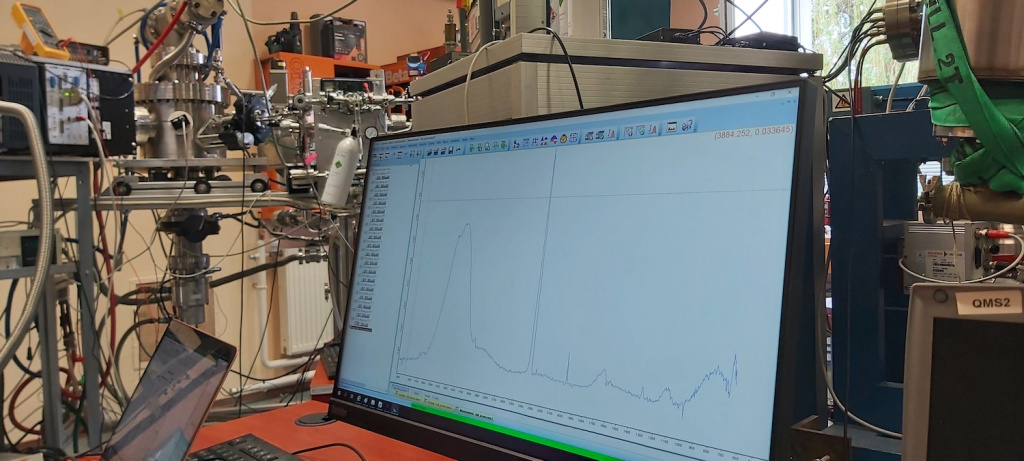
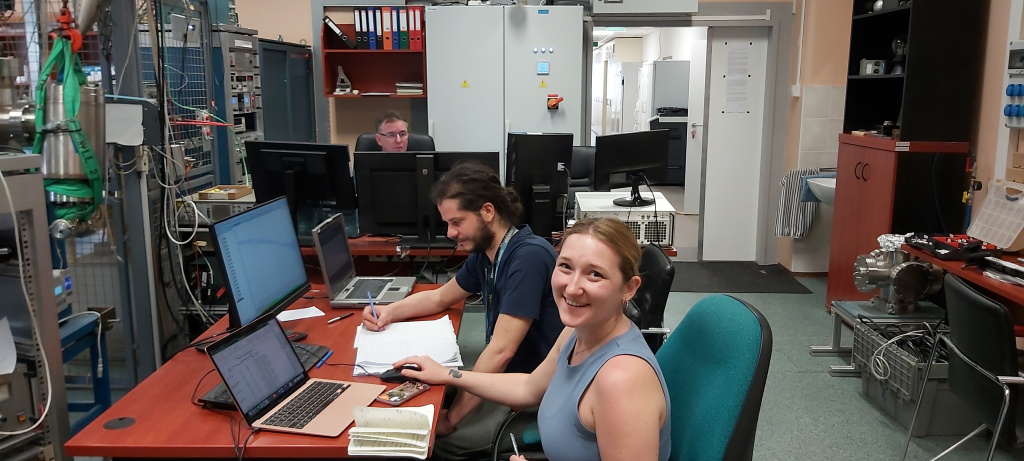
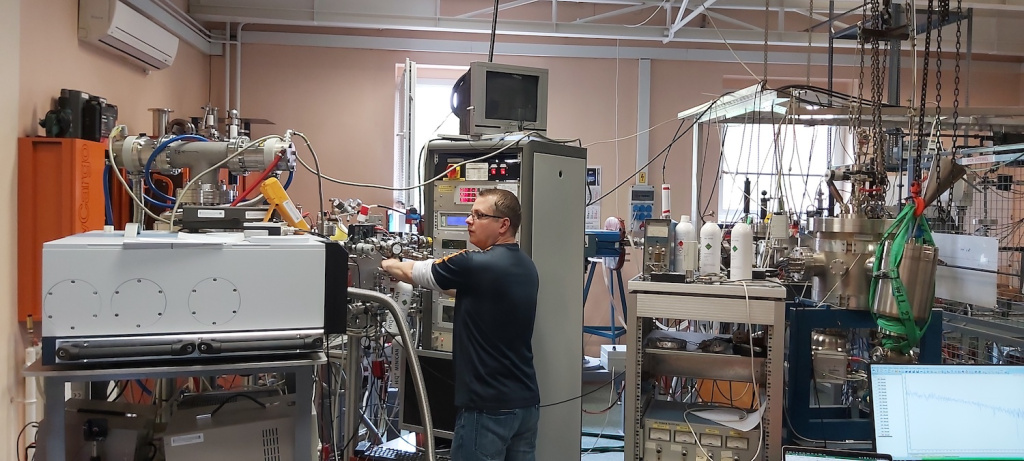
Project 4: Winds of Change
Upgrades to Aarhus University’s Planetary Environment Facility (Denmark)
Team: Jonathan Merrison, Jeppe Kjer, Jens Jacob Iversen and Keld Rasmussen.
International Collaborators: Lulea Technical University
The Planetary Environment Facility (PEF) is the most advanced Mars by ESA and NASA as well as research and industrial communities linked to planetary science.
JRA funding through Europlanet 2024 RI has supported upgrades to the PEF to enable the simulation of icy and airless environments including icy moons and the lunar environment. The new components include additional pumping systems for enhanced vacuum capabilities, and a new test section dedicated to icy-body studies. The 100-fold improvement in vacuum capabilities not only enables new types of experiments but also enhances atmospheric gas purity and faster turnover for experiments at the facility.
Over the past decade, Europlanet funding has significantly upgraded capabilities at the PEF for martian environmental simulations, specifically for wind-driven ice and sand transport, as well as sensor development. The addition in 2018 of a Particle Image Velocimetry (PIV) system, comprising a high-speed camera and laser sheet system, has enabled the tracking of individual suspended particles and the quantification of their velocity and the processes through which they are transported. The system’s installation has enabled various interesting phenomena to be studied in the facility for the first time, including dust aggregates being entrained (lifted), transported and broken up to generate dust.
A new air cooling system means that it is now possible to measure air temperature under low pressure conditions (~10 mbar), with a minimum (average) chamber air temperature of less than -50°C, while applying wind. An LED-based solar simulator, operating at far-ultraviolet wavelengths, has also been installed enabling irradiation studies at low pressure (10 mbar) over several hours.
Multiple members of the community have already used the upgraded facilities in TA visits. Investigations have included studies of ash from large-scale volcanic eruptions on Earth, ice ripples on icy planetary surfaces, and water ice jets emanating from icy moons.

Theme III: Do no harm
Meteorites and samples returned by missions are key to understanding the formation and evolution of the Solar System. The sophistication and number of techniques available in terrestrial laboratories vastly outstrip what is possible in-situ. Planetary missions to date have collected material from the Moon, asteroids, comets, interstellar dust and the solar wind. The increasing focus on sample return by international agencies should mean that there will be a bounty of new material from the Moon, Mars and Phobos delivered back to Earth for analysis over the next decade or so. However, many standard laboratory techniques require that part of the sample is destroyed during the analysis. Where samples may consist of single grains (e.g. particles of the solar wind returned by the Genesis mission), destructive analysis techniques are ruled out by the fact that there is insufficient material to sacrifice. To make the most of upcoming sample return missions, new techniques need to be developed urgently. Two Europlanet JRA investments have concentrated on improving characterisation of space samples in a minimally destructive manner, ensuring that precious samples can be preserved for use by future generations.
Project 5: Procedures for Preservation
Updates to Natural History Museum (NHM)
Team: Rhiannon Heard, Sara Russell, Tobias Salge (NHM) and Penelope Wozniakiewicz (University of Kent).
International Collaborators: DLR, VUA, Brucker Nano GMBh
The aim of this project has been to characterise minerals within meteorites with minimal or no sample preparation. The idea came about through a collaboration between Tanja Mohr-Westheide of the Museum für Naturkunde Berlin and Tobias Salge of NHM initiated during a TA visit to London in 2019. The techniques were trialled on terrestrial Platinum Group element Nuggets (PGN) under conditions suitable for the analysis for small (<1mm) extra-terrestrial grains. PGN are chemically resilient objects, with very high vaporisation temperatures, that are found as micrometre-sized alloys in chondritic meteorites and in materials that have been modified though impacts. While PGN
are thought to have condensed very early in Solar System history – or even be pre-solar – their composition is not well understood. To date, they have been too small to analyse by most techniques and, while their chemistry can be investigated using electron dispersive X-rays (EDX), overlaps in the X-ray energies of relevant elements make quantification challenging.
The new quantification procedures developed in the Europlanet JRA are based on a combination of techniques, including scanning electron microscopy (SEM) and energy-dispersive spectrometry (EDS) microanalysis using Brucker’s QUANTAX FlatQUAD detector. Studies with the new protocols have already produced valuable science, demonstrating that the composition of terrestrial PGN is very complex and likely related to formation and modification under different volatile and oxidation conditions.
Follow-up work has developed an analytical protocol for SEM-EDS quantification of unpolished samples. Surface roughness and topography leads to inconsistencies in the numbers of X-rays hitting the detector, making quantification challenging. This work is potentially of high importance for the analysis of planetary materials, as it would enable the characterisation of precious sample return material without any destructive preparation at all. Using a variety of mineral species relevant to extraterrestrial samples (e.g. apatite, olivine, calcite, silicon carbide and glass) a method has been successfully developed for quantification, albeit with higher errors than is possible for polished samples.
The development work for this JRA project was undertaken by Rhiannon Heard, a postdoc at the NHM. A publication (Heard et al.) is in preparation and will be submitted shortly. Future plans include sharing the new capabilities with the PSL team at DLR, who are currently installing the same Bruker detector. The work on the JRA project is complete and now included in Europlanet’s TA programme.
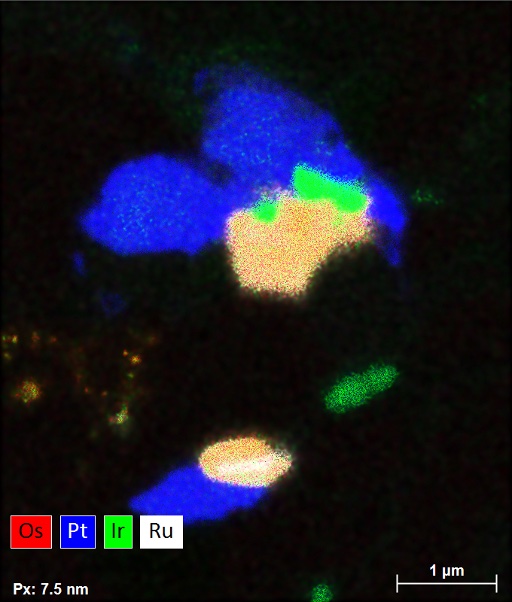
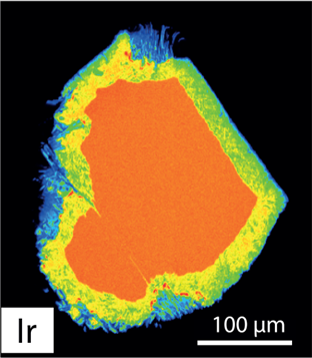
Project 6: State-of-the-Art Applications
Upgrades to VUA-CNRS-ThermoFisher.
Team: Janne Koornneef, Paolo d’Imporzano, Matteo Branchetti and Gareth Davies, Vrije Universiteit Amsterdam (VUA).
International Collaborators: Laurie Reisberg Centre de Recherches Pétrographiques et Géochimiques Nancy, ThermoFisher.
In this academic-industrial JRA collaboration with the instrument manufacturer ThermoFisher, minimally-destructive methods for isotopic analysis have been optimised for very small sample amounts. New collector technology has reduced the amount of material required for analysis by a factor of ten. Despite potential problems with contamination from sample handling in the laboratory, Europlanet-funded work has successfully developed clean methods for the processing and analysis of picogram amounts of isotope systems.
As well as being used to investigate rare extraterrestrial samples, the technology has been applied in the cultural heritage field to study the origins of unique artefacts. Analysis of the white paint on the pearl earring from Vermeer’s famous portrait has revealed that the lead in the paint and primer came from a mine in the UK’s Peak District. The VUA team also recently worked with the national cultural heritage agency and the Naturalis Biodiversity Center to establish the provenance of gold used to gild the Dutch State Golden Coach in 1898. Isotopic analysis of the approximately 1 micrometre-thick layer of gold foil confirmed oral history reports that the gold came from eastern Suriname.
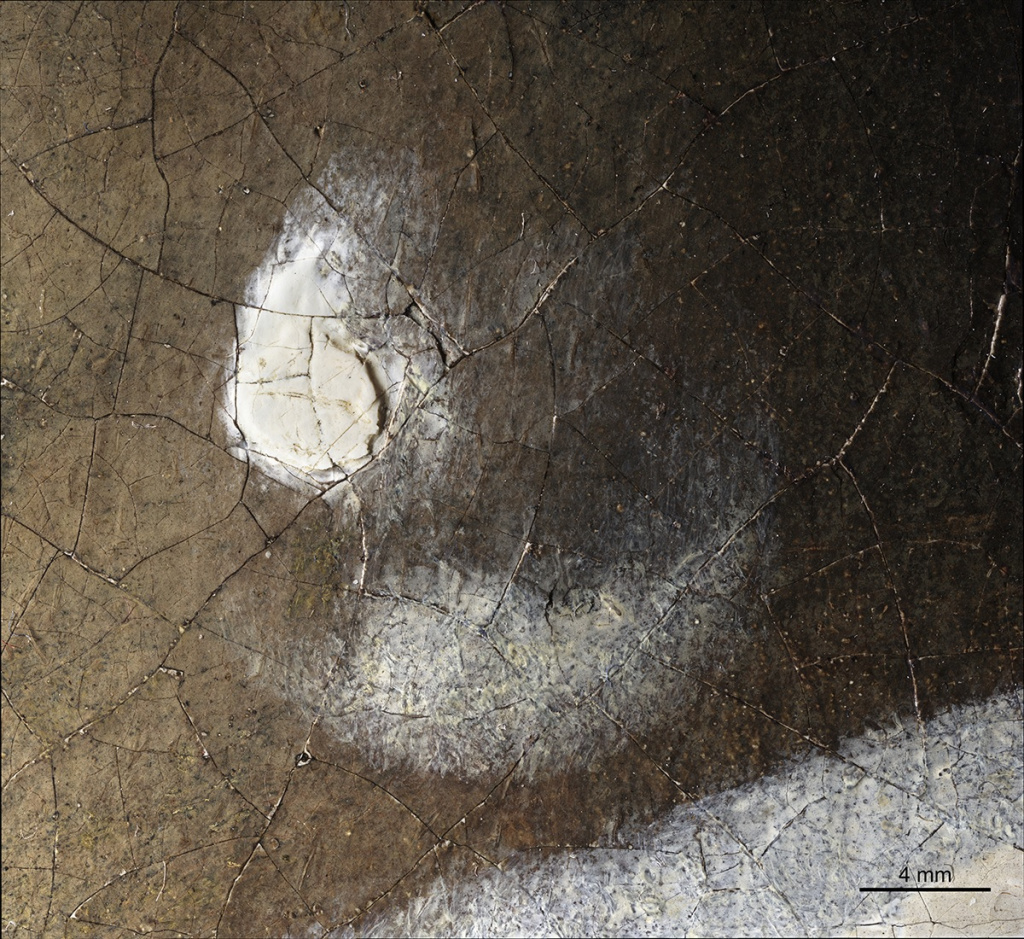
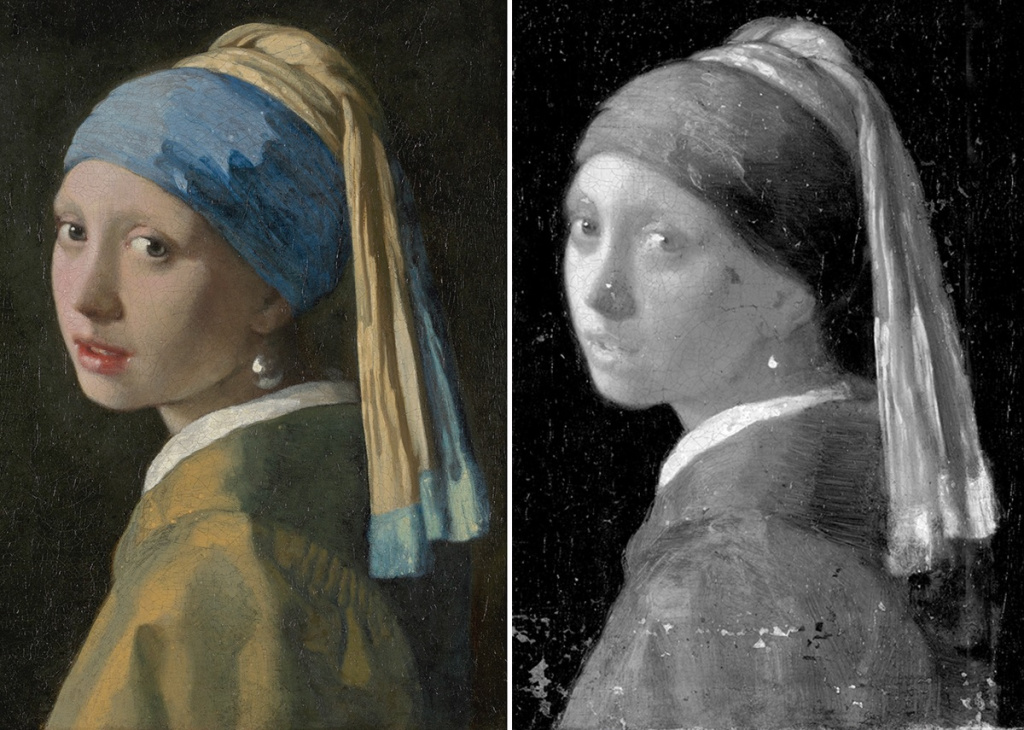
Find out more about Europlanet’s TA laboratory facilities.

